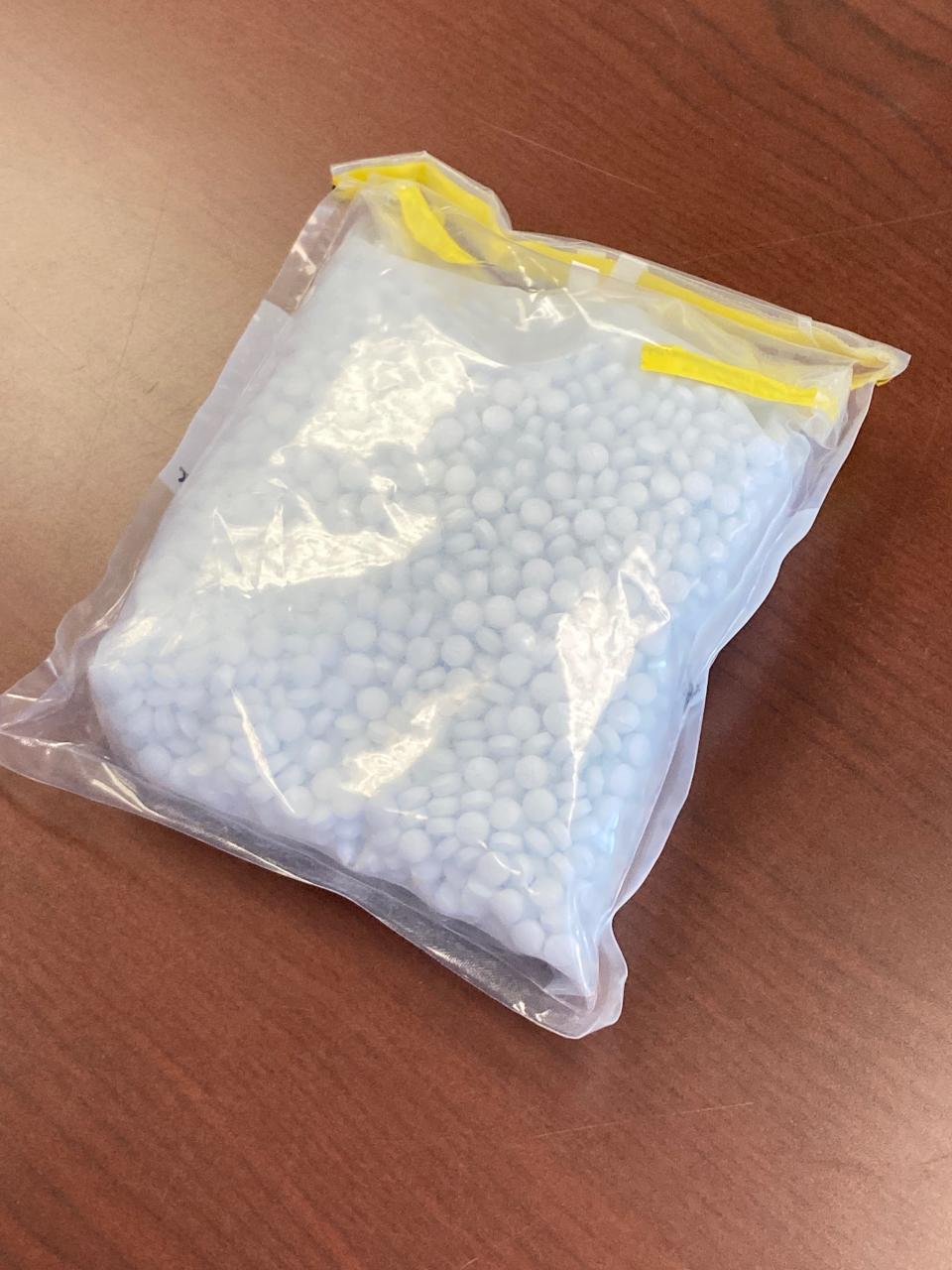Fact check: Experts say passive exposure to fentanyl impossible
Can inhaling a small amount of fentanyl send you into an overdose?
According to medical and addiction experts, and media fact-checks, throughout the last few years, it’s almost impossible. But that research hasn’t stopped the South Dakota Legislature from taking up a bill that would make it illegal for a person to expose law enforcement to drugs that results in serious bodily harm.
HB 1025, sponsored by Rep. Ben Krohmer, R-Mitchell, passed out of the House of Representatives 40-29 on Wednesday and now heads to debate in the Senate.
More: Exposing a first responder to drugs could become a felony under new South Dakota bill
How did we get here?
During committee testimony, Krohmer showed two videos of police officers seemingly overdosing after coming into brief contact with fentanyl during routine operations.
"This drug is dangerous to everyone," Krohmer said at the time. "Our police, law enforcement officers, firefighters, paramedics, first responders and correctional officers are the most at risk."

Fentanyl overdoses and arrests continue to rise across the nation. Attorney General Marty Jackley told senators during an informational hearing earlier in session that there had been 88 fentanyl-related arrests and an average of 10 pounds of fentanyl seized in South Dakota in 2022.
The amount is enough to kill the population of South Dakota several times over, Jackley said.
But law enforcement exposure resulting in officers using Naloxone, or Narcan, a drug used to stop an overdose, has almost never happened. The Attorney General’s Office told the Argus Leader stated that DCI had only used Narcan twice during the past five years to prevent an officer overdose. Sam Clemens, a spokesperson for the Sioux Falls Police Department, and Capt. Josh Philips, with the Minnehaha County Sheriff’s Department, stated their agencies have never had to provide Narcan to an officer who was exposed to fentanyl in the last two years.
Lawmakers opposed to the bill questioned what would happen if someone accidentally exposed law enforcement or first responders to a drug.

Rep. David Kull, R-Brandon, originally voted for the bill in committee but pulled his support on the floor, saying after he did his own research, he found officers' symptoms in the body camera footage were akin to panic attacks, not overdoses.
“I have seen officers suffer from similar things where they weren't necessarily injured by something but reacting to a situation that they would have a panic attack or pass out, which I would have never expected,” the former Brandon police chief said. “Fentanyl has been around for a while. It is a dangerous drug. But I can't find anything that indicates that it is true.”
Rep. Kadyn Wittman, D-Sioux Falls, used to work at a homeless shelter and has had to administer Narcan to residents suffering from overdoses. She told lawmakers what she had seen contradicted what the videos depicted.
“When somebody has overdosed, they very slowly drift off to sleep," she said. "They eventually stop breathing and they've never wake up."
A pervasive myth
Brandon Del Pozo, an assistant professor of medicine at Brown University, has authored multiple academic articles combating the myth of exposure since 2021.
“There has never ever, ever, ever, ever, ever been a confirmed case of an officer just encountering fentanyl in the field and overdosing,” Del Pozo said.
The former New York City police officer and Burlington, Vermont police chief told the Argus Leader this week there has never been a follow-up toxicology report to confirm if the cops, who alleged they were exposed to fentanyl, actually had been.
The Attorney General’s Office could not confirm if a follow-up toxicology report was done in the two instances Narcan had been administered to the agency’s law enforcement.
More: Fentanyl test strips declassified as drug paraphernalia in new South Dakota law
A 2017 report from the American College of Medical Toxicology and the American Academy of Clinical Toxicology found it would take 200 minutes of someone breathing in fentanyl particulates to trigger an overdose.
A video released by the San Diego Sheriff’s Department depicting an officer allegedly overdosing on fentanyl after being exposed was pulled by the department, after the sheriff said no medical expert had been consulted, according to Del Pozo. Additionally, the U.S. Drug Enforcement Administration pulled a 2016 advisory stating fentanyl could cause an overdose if touched or inhaled.
During the past few years, multiple media outlets have fact-checked the idea that just simply touching or inhaling small traces of fentanyl could send someone into an overdose. National Public Radio reported their reporters could not find one instance of a police officer reporting a confirmed fentanyl overdose in 2023. The New York Times Editorial Board called passive exposure a “baseless public health scare” in 2019.
Even comedian and satirical news show host John Oliver, who hosts Last Week Tonight with John Oliver on HBO, reiterated in 2022 that exposure is impossible.
“It is deeply irresponsible of police to keep perpetuating a medical impossibility and for media outlets to keep amplifying it,” Oliver said, referencing news stories across the country reporting police had suffered overdoses from a passive exposure to fentanyl.
Why does the exposure myth keep getting repeated?
Fentanyl is a potent opioid that only takes a few grams to trigger a potentially fatal overdose. More than 80,000 Americans died of an opioid overdose in 2021, according to the Centers for Disease Control and Prevention.
Because of the messaging about how dangerous the drug is, it can induce fear among people. Del Pozo likened the messaging to telling a room full of people there’s an invisible poison in the air.
“If someone in the room says, ‘Oh my god, the poison’s here,’ someone is going to faint,” Del Pozo said.
More: Efforts to create better programming opportunities for inmates fails in SD Legislative session
If fear about possible passive exposure to fentanyl continues, it could make first responders and the public less likely to treat overdose patients.
“It falsely transforms overdose emergencies, which require rapid response to prevent death, into perceived life-and-death situations for first responders as well,” Del Pozo wrote in 2021.
Del Pozo recommended law enforcement and first responders wear protective gear, such as gloves and safety glasses, when treating patients who have overdosed on fentanyl. He added if they’re really concerned about a possible passive exposure from inhalation, they should wear a mask.
“Fentanyl is a potent substance but it's not kryptonite for cops,” he said. “If all else fails, Naloxone works. So just take the Naloxone, but I remind you, like, standard precautions are all you need.”
This article originally appeared on Sioux Falls Argus Leader: SD House passes bill on exposure. But how often does that happen?

